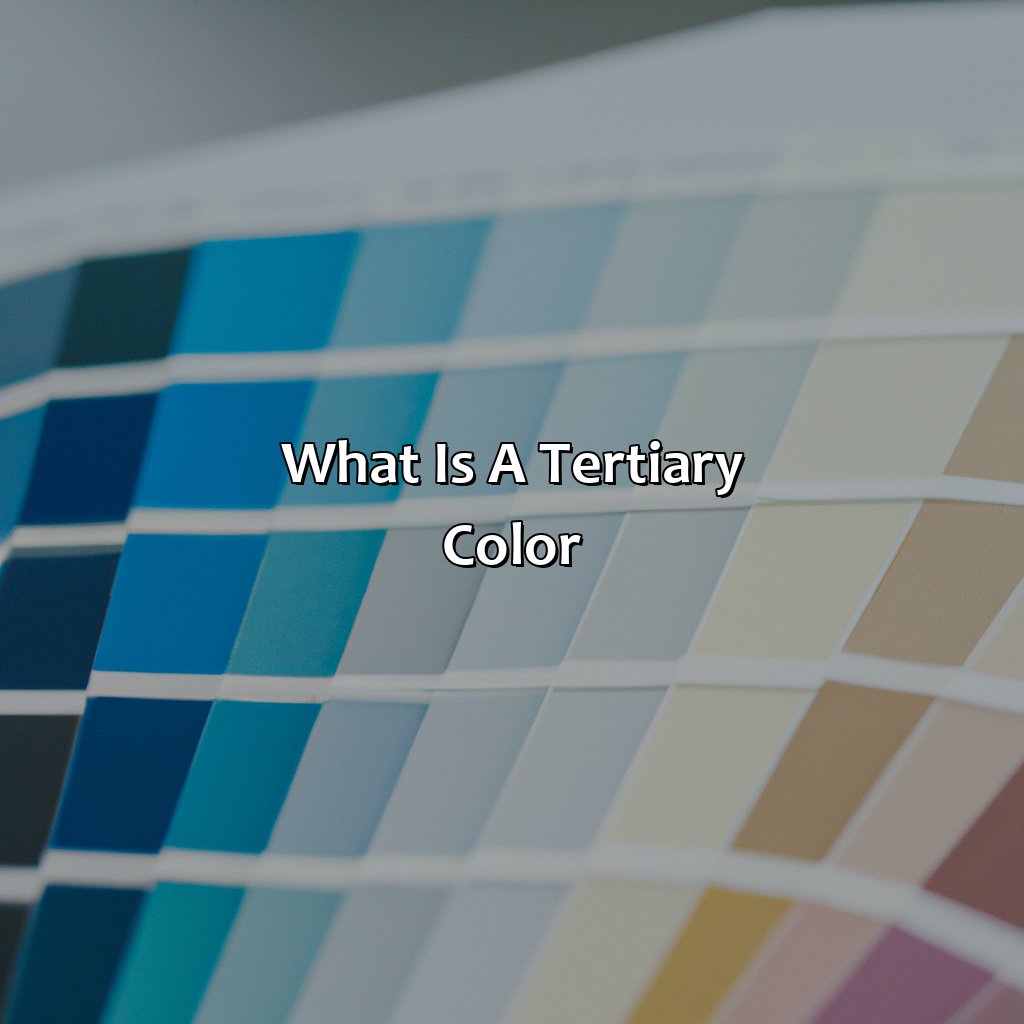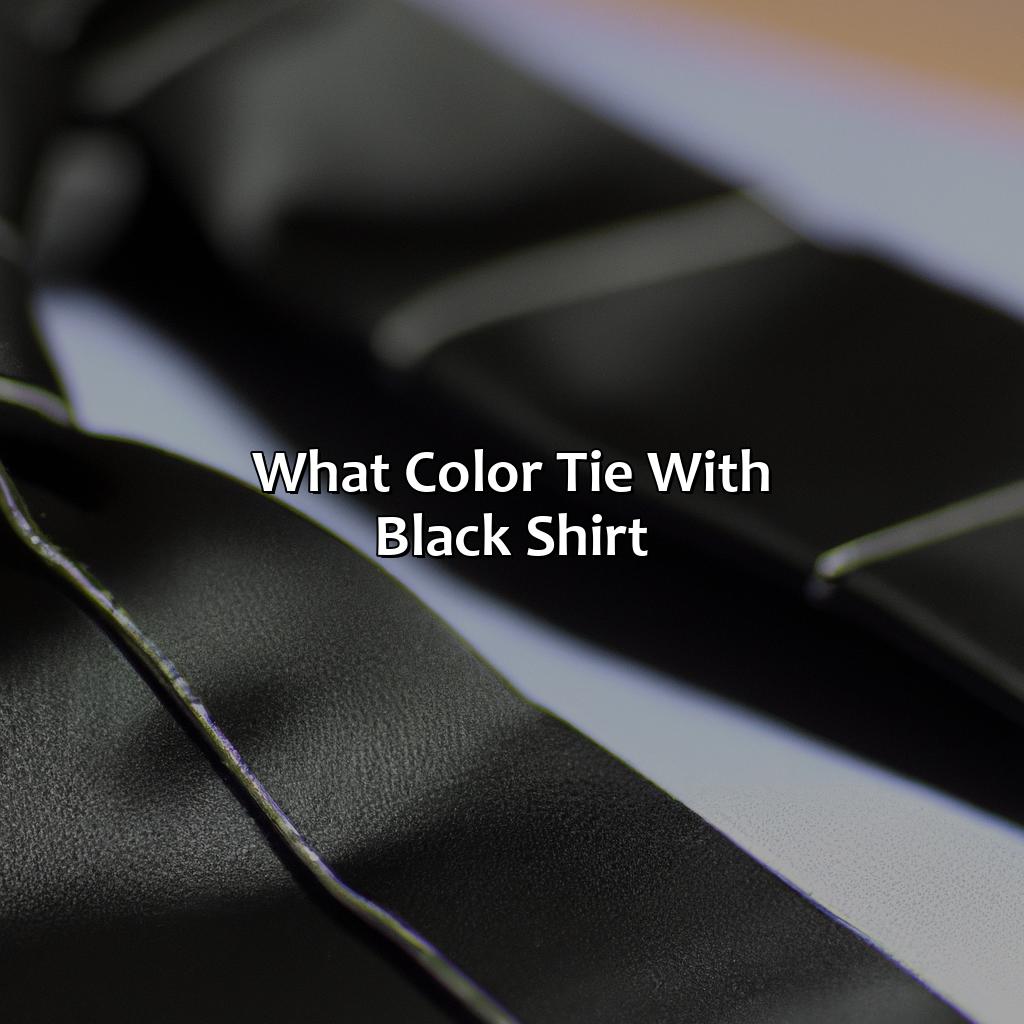Key Takeaway:
- Tertiary colors are colors created by mixing a primary color with a secondary color, resulting in colors such as yellow-green and red-violet. They are important in color theory and have practical applications in design, art, and other fields.
- Tertiary colors are formed by combining primary and secondary colors in varying amounts to create different shades of color. For example, mixing yellow (a primary color) with green (a secondary color) can result in colors such as yellow-green or chartreuse.
- The use of tertiary colors can enhance color perception, create color harmony and balance, and add contrast and interest to a design. Different color schemes such as monochromatic, analogous, split complementary, tetradic, and triadic can be used to incorporate tertiary colors into design.
Understanding Primary and Secondary Colors
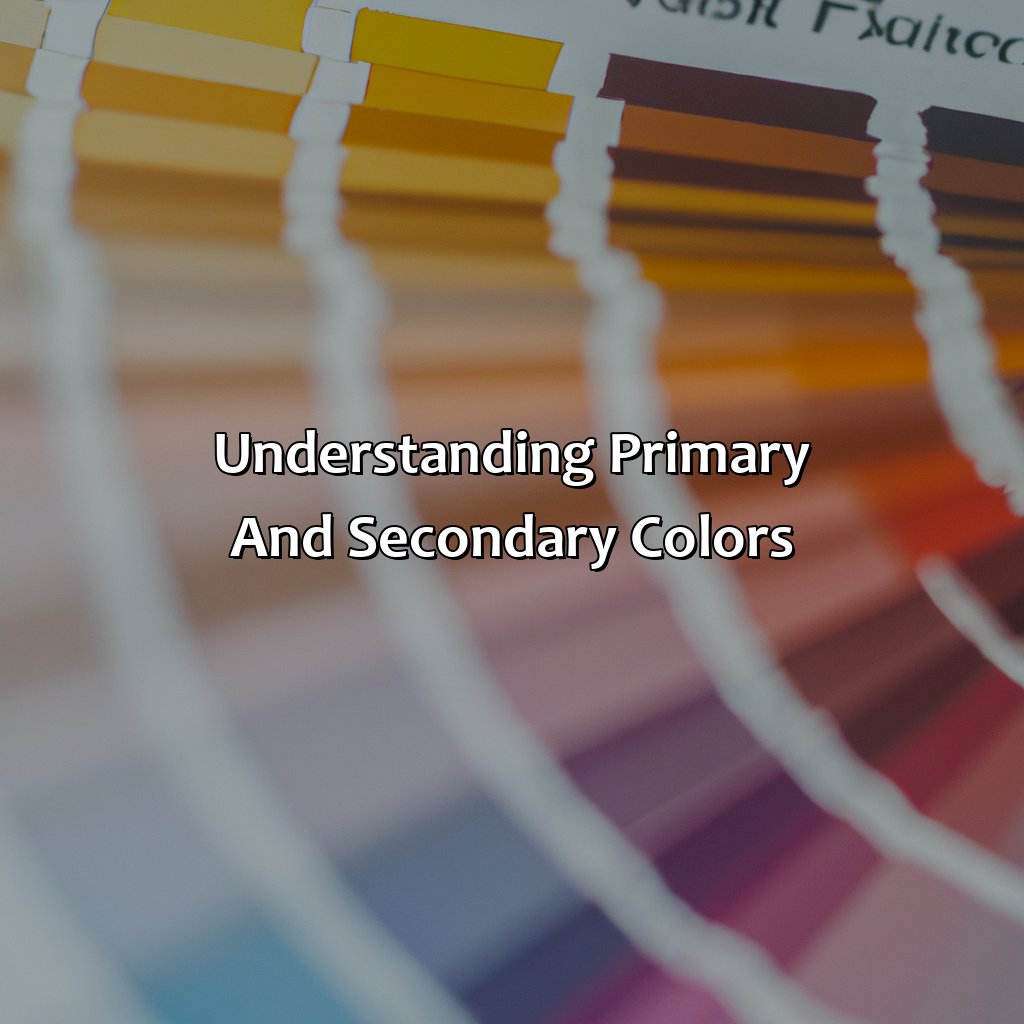
Photo Credits: colorscombo.com by Aaron Garcia
Fancy learning how to mix primary and secondary colors for the perfect tertiary shades? You’ll need to know the basics. A color mixing wheel is a great tool to help. Let’s define primary and secondary colors first. That way, you’ll understand how to make the perfect tertiary shades!
Definition of Primary Colors
Primary colors, in the realm of color theory, refer to a set of hues that cannot be formed or created by mixing other colors together. These colors are considered the fundamental building blocks for all other colors. They are essential in creating a base for all artworks and designs, which is why understanding the definition of primary colors is crucial.
Exploring further details about the primary colors, we can say that they consist of three different shades – red, blue, and yellow. It means that each of these hues is pure and cannot be created by combining other colors together. In this way, these primary colors cannot be broken down into simpler colors because they are at their most basic form.
It’s important to note that primary colors have many uses outside of art and design as well. For instance, many programmers use them when coding websites or software platforms. It’s vital to have an understanding of what they are and how to use them correctly in knowing what combinations create secondary and tertiary shades.
If you want to learn more about color palettes or are looking to expand your design skills on your next project, having knowledge about the definition of primary colors is essential. Not knowing may limit your options when it comes to the work you can produce professionally.
Secondary colors are what happens when primary colors mix and create a lovechild that’s equal parts mom and dad.
Definition of Secondary Colors
Secondary colors are a result of mixing two primary colors together. These colors are green, orange, and purple. Green is created by mixing blue and yellow, orange is made from red and yellow, while purple is formed from red and blue. The definition of secondary colors differs from that of primary colors as they can’t be created from other hues but only through the combination of two primaries.
The mixture of primary colors leads to the formation of secondary colors. When discussing color theory or art designing, it’s crucial to understand the definition of secondary colors. Artists use these hues extensively in their paintings to create contrast and balance in their artwork. These mixtures provide artists with various shades and tones for their expressions.
By understanding the characteristics and properties of these color types, you can identify their unique attributes, leading to proper utilization in different scenarios. Incorporating secondary colors in your marketing campaigns ensures vibrancy as well as liveliness within your collateral design materials.
It’s interesting to note that Claude Monet used his techniques to blend paint on canvases directly using adjacent complementary hues instead of blending them on his palette; this technique is referred to as pointillism.
Get ready for a colorful journey as we explore the fascinating world of tertiary colors and their endless possibilities.
What are Tertiary Colors?
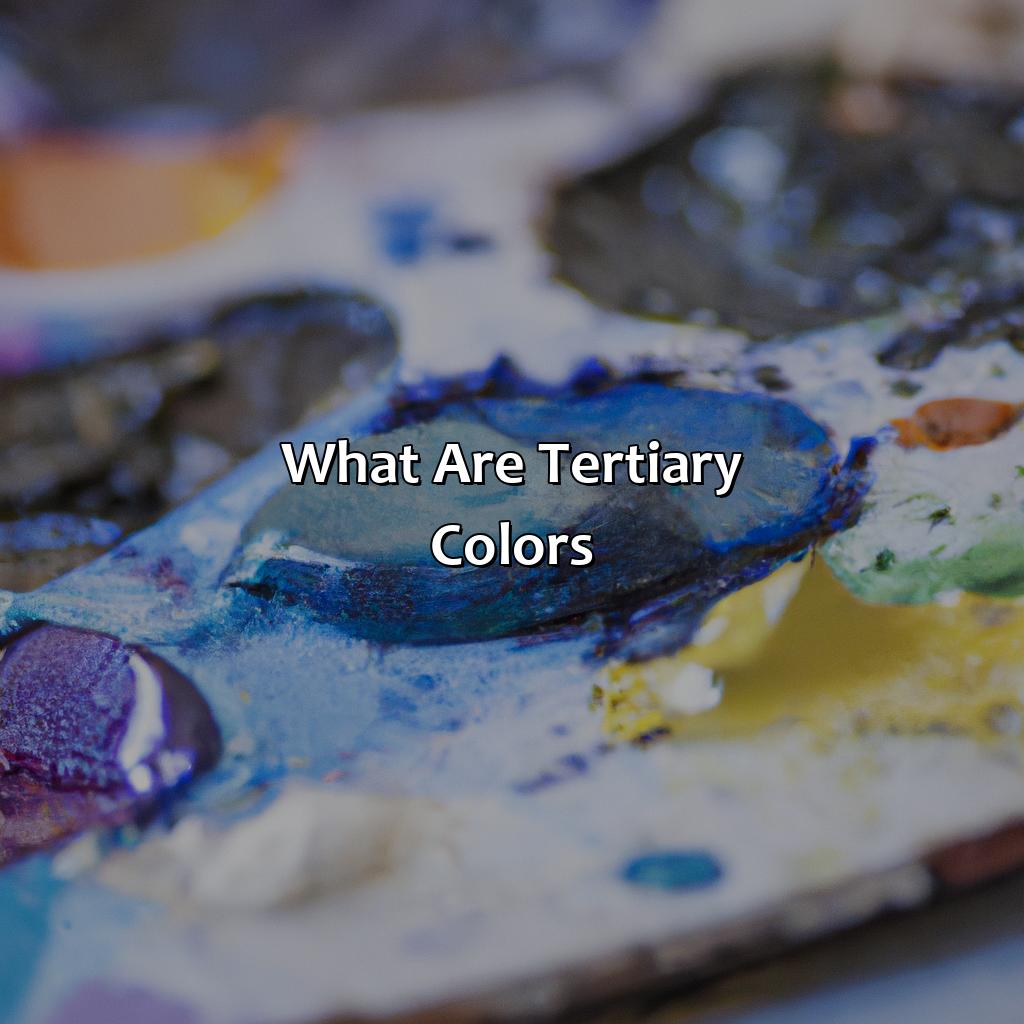
Photo Credits: colorscombo.com by Nicholas Baker
Do you know what tertiary colors are? If so, you can learn to mix them and create unique colors for your artwork. Grasping the concept of these colors will help to take your art to a higher level. Get to know their definition and how they form. Then you’ll have a range of colors to choose from!
Definition of Tertiary Colors
Tertiary colors are an essential part of the color wheel. They refer to hues formed by mixing one primary and one secondary color in equal amounts. Essentially, they lie between secondary and primary colors. The resulting tertiary hue is more subdued and muted than their parent colors, making them excellent for background bases or main focal points.
These colors are often used in graphic design, fashion and interior design as they complement vibrant tones without overpowering them. Additionally, they add depth, texture and complexity to a composition.
Unlike primary or secondary colors, there are six tertiary colors– yellow-orange, yellow-green, blue-green, blue-violet, red-violet and red-orange. To create these hues on a color wheel requires thorough understanding of the principles behind these interactions.
To make the most effective use out of them it’s best to use complementary or analogous combinations that feature tertiary hues with neutral shades like white or black. This allows individuals to explore different aspects of their chosen palette whilst retaining balance between their concepts.
Incorporating tertiary hues into design can have a significant impact on brand recognition in marketing campaigns. By utilizing such tones with eye-catching fonts or slogans creates memorable advertising content that stands out from competitors.
Creating tertiary colors is like mixing two cocktails and adding a secret ingredient for a unique and refreshing taste.
Formation of Tertiary Colors
Tertiary colors are formed by combining equal parts of a primary color with an adjacent secondary color. This results in six different tertiary colors which offer designers an expanded color palette to work with. It is important to note that the formation of tertiary colors can vary depending on the specific color wheel being used.
To create tertiary colors, we need to mix primary and secondary colors together in a precise ratio. By mixing them, we can obtain a new array of hues that display intermediate characteristics from both primary and secondary pigments. This creates more options for designers to communicate different emotions since these variations elicit varied psychological responses.
Unique details regarding the formation of tertiary colors mainly depend on two crucial factors, which are saturation and brightness value. The former factor refers to the intensity or vividness of a hue whereas the latter determines how much darker or lighter that hue is compared to white or black – it also affects contrast and readability.
When working with tertiary colors, it’s essential for design professionals to keep in mind several suggestions considering their vibrancy, mood conveyance, usage restrictions, complementary pairs, triad formations and so on. This helps maintain overall cohesiveness while providing accentuated visual interest visually appealing designs.
Get creative with the tertiary spectrum and unlock a world of color combination ideas for your next design project.
Examples of Tertiary Colors
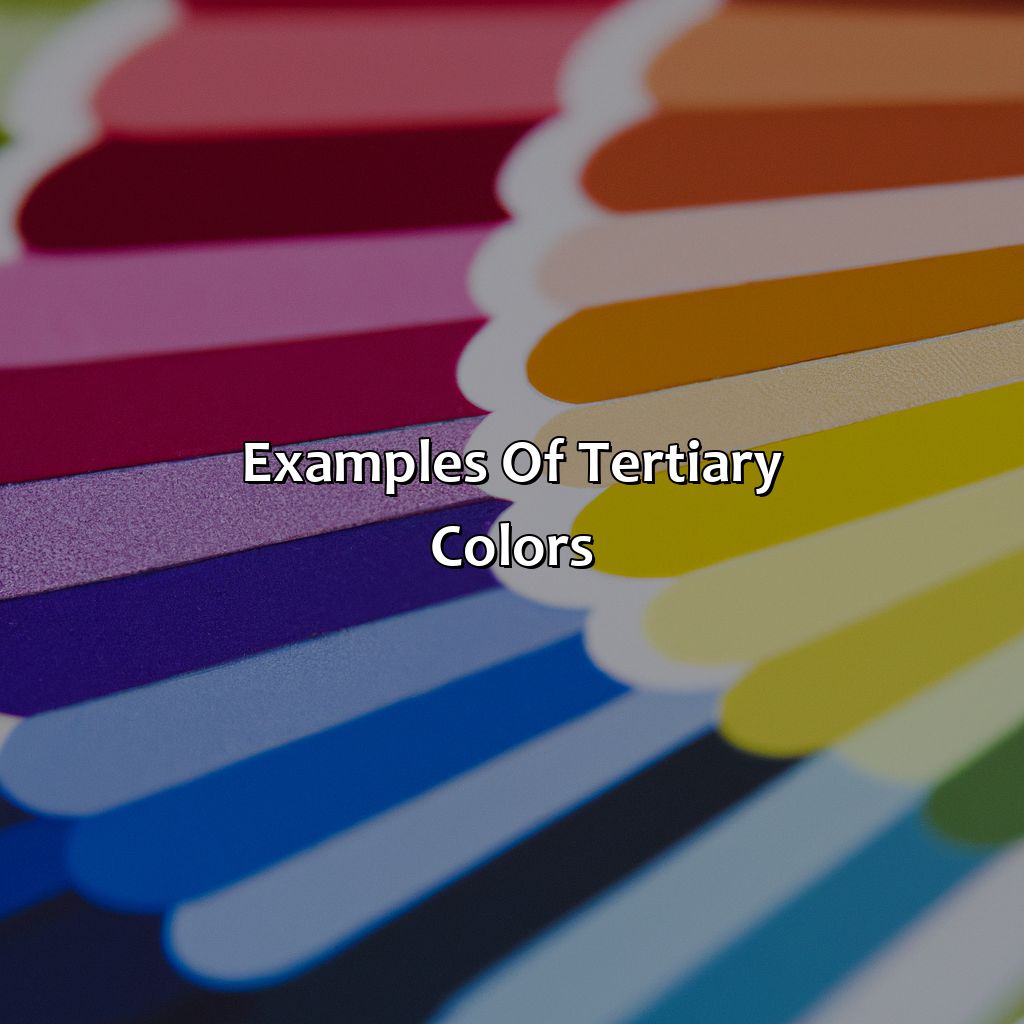
Photo Credits: colorscombo.com by Philip Robinson
If you want to make a stunning tertiary spectrum, try a color wheel! You’ll find great examples of tertiary colors there. For color combo, palette or scheme ideas, you can find excellent options to inspire you. To learn how to blend colors, look at art and design examples. Discover more about color matching and symbolism by exploring these examples.
Using a Color Wheel to Create Tertiary Colors
To create tertiary colors, using a color wheel can be a useful tool. By combining primary and secondary colors in specific ratios, a range of unique colors can be created.
Here is a 3-Step Guide for using a color wheel to create tertiary colors:
- Start by selecting one primary color and its adjacent secondary color on the color wheel.
- Mix equal parts of those two colors to create a secondary/intermediate color.
- Finally, mix the intermediate color with an adjacent primary or secondary color to create the tertiary color.
When using this method, it’s important to note that the ratio of each color will determine the final shade and hue of the tertiary color.
It’s worth mentioning that this method is not the only way to create tertiary colors, but it is a simple and effective method that can be applied by anyone interested in art or design.
Incorporating tertiary colors in your design can add depth and nuance to your work. A well-placed tertiary accent can make your design stand out and emphasize certain aspects or elements of your work.
Color matching is an art, but color symbolism is a science; use both to create masterpieces in art and design.
Examples in Art and Design
Artistic and Design Applications of Tertiary Colors
Various artistic fields utilize tertiary colors for color matching and symbolism. Artists can use tertiary colors in different ways to create an impact. The characteristic features of these colors can be used to produce a particular effect on the viewers’ emotions.
The table below highlights examples of tertiary colors in art and design. This table displays a range of expected tertiary hues with their corresponding RGB values, which artists use while creating their artworks.
| Tertiary Hues | RGB Values |
|---|---|
| Red-Orange-Brown | 142, 35, 26 |
| Blue-Green-Yellow | 38, 142, 93 |
| Red-Purple-Blue | 86, 43, 140 |
Furthermore, many designers incorporate tertiary colors to symbolize specific concepts or ideas in Marketing. Companies tend to capitalize on the power of color symbolism by using specific tertiary shades relevant to their brand values or identity.
To add more dimensions to visual projects that intend to communicate through color schemes, designers blend primary and secondary hues to arrive at a perfect match; this way they also unlock the charm carried by these exceptional ecospheres.
An essential suggestion is that creators need to understand how each shade affects the mood conveyed through their content. They must utilize tertiary hues wisely by balancing presence with subtlety where it is needed for optimal impact.
Add a pop of excitement to your design with tertiary colors – it’s like adding the spice to your nachos.
How to Use Tertiary Colors

Photo Credits: colorscombo.com by Edward Gonzalez
Mastering tertiary colors is key to unlocking color harmony, balance, and contrast. “How to Use Tertiary Colors” is your guide! Here you will learn tricks and tips to control color temperature, intensity, and value. This section is divided into two parts.
- “Tips for Using Tertiary Colors in Design” teaches monochromatic, analogous, split complementary, tetradic, and triadic color schemes.
- “Impact of Tertiary Colors in Marketing and Advertising” explains color psychology, neutral, warm, and cool colors, and their use in marketing.
Tips for Using Tertiary Colors in Design
Using Tertiary Colors Effectively in Design:
Tertiary colors are created by mixing primary and secondary colors, resulting in unique hues that can add depth and complexity to any design. To make the most out of tertiary colors in design, here are some best practices:
- Use tertiary colors to enhance a monochromatic color scheme: Adding a few well-chosen tertiary colors can bring subtle variation in a monochromatic scheme, adding interest without overwhelming the simplicity.
- Create harmony with analogous color scheme: Tertiary colors can be used effectively to connect two different hues from an analogous color scheme. It helps designers use these three-step transitions to create beautiful and harmonious palettes.
- Try split-complementary or tetradic color schemes for more depth: Using complementary colors alongside their related tertiary shades within split-complementary or tetradic color schemes can help make designs feel balanced but dynamic.
To get the most out of your tertiary colors, try these suggestions:
- Experiment with different tints, shades and tones of tertiary hues: Tertiary shades have plenty of nuances that can be used to create subtle differences. The difference between one shade with a little more yellow versus another reddish tone could subtly alter how people receive your work.
- Use triadic color schemes as complementary pairings can clash: While using complementing pairs is popular, incorporating a third hue (a tertiary color) can provide extra balance needed to elevate the entire palette.
By thoughtfully incorporating tertiary colors into your design work you’ll be able to expand the possibilities of what you create while also making your message stand out with style.
Choosing the right tertiary color can make or break your marketing campaign – it’s all about the psychology of color.
Impact of Tertiary Colors in Marketing and Advertising
Tertiary colors have a powerful role in the world of marketing and advertising due to their ability to evoke specific emotions and feelings in consumers. The use of tertiary colors helps brands stand out and gain attention within a sea of competitors. As color psychology plays an important role in marketing, it is essential for designers and marketers to understand how different tertiary hues complement neutral, warm, or cool colors, which can influence consumer behavior.
Using a combination of tertiary colors along with primary and secondary hues creates a unique visual impact on any design. In contrast, opting for monotone or limited color palettes can sometimes be perceived as dull. Brands that want to differentiate themselves from competitors often experiment with bright and bold tertiary shades that resonate with their target audience while creating a strong brand identity.
It is essential to note that the impact of tertiary colors largely depends on which colors are used specifically in marketing. For example, using muted yellow-orange tones may communicate warmth and comfort, while green-blue hues may denote serenity or creativity based on individual experiences. However, using too many bright or mismatched hues can create confusion among consumers.
According to a study conducted by Emerald Insight (2021), over 85% of consumers rely heavily on color when making purchasing decisions. Hence marketers must carefully choose their tertiary color palette as it could make or break their brand’s perception among potential buyers.
Five Facts About Tertiary Colors:
- ✅ Tertiary colors are created by mixing one primary color with one secondary color. (Source: MyModernMet)
- ✅ The three tertiary colors are yellow-green, yellow-orange, and blue-violet. (Source: ColorMatters)
- ✅ Tertiary colors are more muted and subtle than primary and secondary colors. (Source: Canva)
- ✅ Mixing tertiary colors with each other or with primary and secondary colors can create a wide range of complex and nuanced hues. (Source: Color Wheel Artist)
- ✅ Understanding tertiary colors is important for artists, designers, and anyone interested in color theory and aesthetics. (Source: Creative Bloq)
FAQs about What Is A Tertiary Color
What is a tertiary color?
A tertiary color is a color that is created by mixing a primary color and a secondary color together. There are six tertiary colors including yellow-green, blue-green, blue-violet, red-violet, red-orange, and yellow-orange.
How are tertiary colors different from primary and secondary colors?
Primary colors are the three basic colors that cannot be created by mixing other colors together. Secondary colors are created by mixing two primary colors together. Tertiary colors are created by mixing a primary color with a secondary color.
What is the color wheel and how does it relate to tertiary colors?
A color wheel is a visual representation of colors arranged in a circular format. Tertiary colors are located between primary and secondary colors on the color wheel. They are created by mixing the adjacent primary and secondary color together.
Why are tertiary colors important in art and design?
Tertiary colors add depth and complexity to artwork and design. They allow artists and designers to create more nuanced color schemes and achieve a wider range of shades and hues. Tertiary colors also help to balance and harmonize the overall color composition of a piece.
Can you mix tertiary colors with each other?
Yes, tertiary colors can be mixed together to create even more complex and nuanced shades. For example, mixing blue-green (a tertiary color) with yellow-green (another tertiary color) will create a darker, more muted green shade known as “jungle green.”
What is the RGB value of a tertiary color?
The RGB (Red Green Blue) value of a tertiary color depends on the specific combination of primary and secondary colors used to create it. For example, the RGB value of yellow-green (a tertiary color created by mixing yellow and green) is approximately (154, 205, 50).
